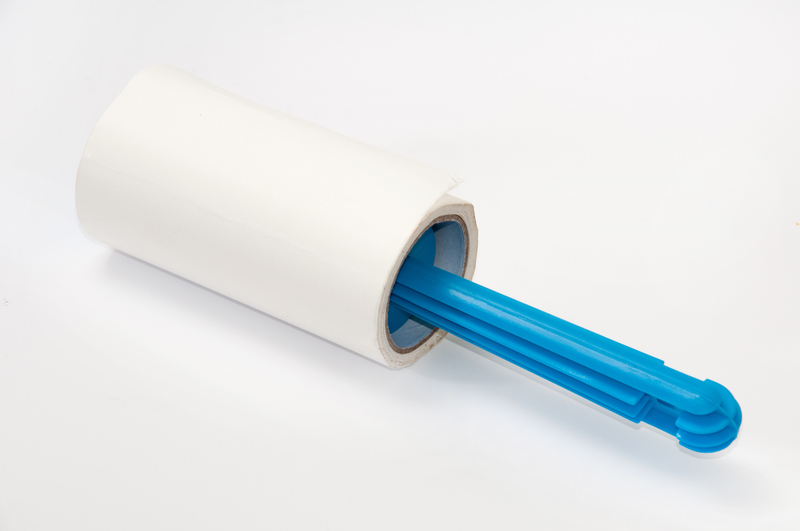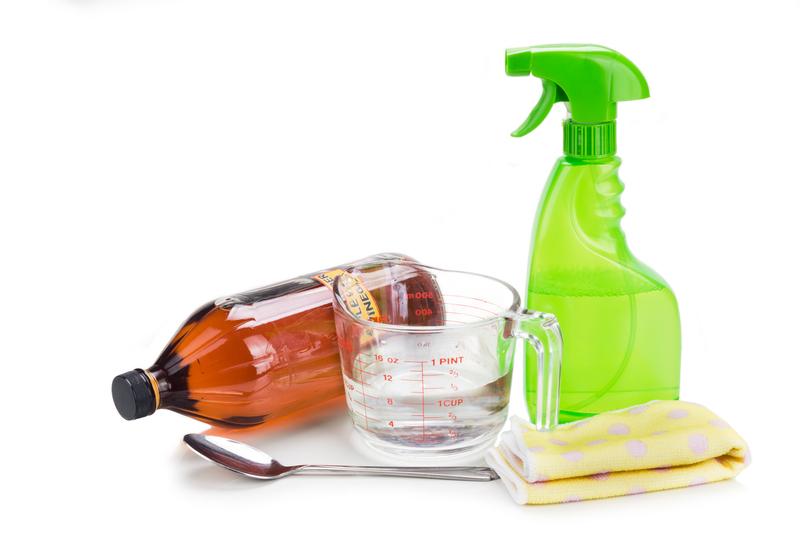Grease-Free Delight: Simple Steps for Clean Enamel Trays
Posted on 13/06/2025
Grease-Free Delight: Simple Steps for Clean Enamel Trays
Are stubborn grease stains ruining the look and functionality of your favorite enamel trays? Worry no more! This comprehensive guide unveils the secrets to keeping your enamel trays brilliantly clean and grease-free, making every meal and gathering a delightful experience.
Why Keeping Enamel Trays Spotless Matters
Enamel trays are beloved for their vintage charm, durability, and versatility. Whether you're baking, serving, or displaying food, a sparkling tray enhances presentation and hygiene. But over time, grease build-up can cause:
- Unpleasant odors
- Unsightly stains and discoloration
- Possible bacterial growth
- Shortened tray lifespan due to corrosion or wear
Thankfully, with easy cleaning methods and the right care, enamel trays can remain gleaming for generations. Let's dive into the best practices for a grease-free delight every time!

Getting to Know Your Enamel Trays
Before you start, it's essential to understand what makes enamelware unique. Enamel trays are typically made of metal--often steel or cast iron--coated with fused glass enamel. This provides a non-porous, glass-like surface.
Key Benefits of Enamel Trays
- Non-reactive: Safe for acidic foods.
- Durable: Resistant to scratches and stains.
- Visual appeal: Classic, glossy finish enhances presentation.
However, the smooth finish means that while food doesn't absorb, grease and grime can cling if left unwashed, forming tough residues over time.
Essential Supplies for Clean Enamel Trays
To keep your trays grease-free and sparkling, arm yourself with these effective cleaning tools:
- Soft sponge or cloth (non-abrasive)
- Mild dish soap
- Baking soda
- White vinegar
- Wooden or silicone spatula/scraper
- Soft-bristled brush
- Lemon juice (optional for odor removal)
- Hot water
- Microfiber towel for drying
- Rubber gloves for heavy-duty cleaning
Note: Avoid harsh abrasives, steel wool, or strong chemicals which can scratch or damage the enamel finish.
Simple Steps to a Grease-Free Enamel Tray
Follow these proven steps for restoring your tray's shine and maintaining excellent condition:
1. Act Fast After Each Use
The best defense against grease stains is immediate action! Once you're done serving or cooking, allow the tray to cool, then remove leftover food debris promptly. Delaying cleaning lets grease harden and makes removal harder.
2. Pre-soak for Stubborn Grease
For dried-on oils and food, pre-soaking is a must:
- Fill the tray with hot (not boiling) water and add a squirt of mild dish soap.
- Let it sit for 15-30 minutes. This loosens grease without harsh scrubbing.
3. Gentle Scrubbing with Soapy Water
Use a soft sponge or cloth dipped in the soapy water to clean the tray. Work in circles, focusing on greasy areas.
For hard-to-reach corners or textured surfaces, a soft-bristled brush can help.
4. Baking Soda Magic for Persistent Stains
Baking soda is a safe, natural abrasive that tackles stubborn grease:
- Make a thick paste using baking soda and a little water.
- Apply the paste to greasy or stained spots.
- Let it sit for 10-20 minutes.
- Gently scrub with a non-abrasive sponge or brush.
5. White Vinegar Rinse for Shine and Odor Removal
White vinegar is a natural deodorizer and grease-cutter. After scrubbing, rinse the tray with a 1:1 mixture of vinegar and hot water for a streak-free, odor-free finish.
6. Tackle Burnt-On Grease with Lemon
For persistent burnt spots:
- Sprinkle baking soda on the area.
- Rub with half a lemon, allowing the juice to react with the soda.
- Let it fizz for a few minutes, then scrub gently.
7. Rinse and Dry Thoroughly
Always rinse your enamel trays thoroughly with warm water to remove soap and cleaning residue.
Immediately towel-dry with a lint-free cloth to prevent water spots and rust on any exposed metal edges.
Advanced Tips: Keeping Enamel Trays Pristine
Regular Maintenance Routines
- After each use: Wash, rinse, and dry promptly.
- Every month: Deep clean with baking soda paste if you use trays frequently for oily or sticky foods.
- For stains: Tackle them immediately before they set.
What Not to Do for Enamel Tray Care
- Don't use metal utensils or abrasives--they cause chips and scratches.
- Don't put trays directly over open flame or exposed heating elements.
- Don't use bleach or ammonia-based cleaners.
- Don't store trays with moisture--dry thoroughly after washing.
Eco-Friendly Tips for Enamel Tray Cleaning
Embrace sustainable cleaning! Both baking soda and vinegar are eco-friendly options that are safe for your cookware and the environment. Avoid excessive use of chemical cleaners which can be harsh and polluting.
DIY Grease Removal Solutions
- Vinegar & Baking Soda Soak: The classic combo for powerful degreasing. Use for burnt oil or sticky syrup residues.
- Lemon Juice: Use leftover lemon peels to rub trays for a natural fresh scent and shine.
- Salt Paste: Mix salt and water to lift light stains without scratching.
Using household ingredients saves money and is gentler on both your health and the world!
Frequently Asked Questions about Clean Enamel Trays
How do I remove old, baked-on grease from enamel trays?
For tough, old grease stains, soak the tray overnight in hot, soapy water. The next day, use a baking soda paste and gentle scrubbing. For extremely stubborn spots, repeat the vinegar and baking soda combo, and avoid scraping with metal tools.
Is it safe to put enamel trays in the dishwasher?
Most modern enamelware is labeled dishwasher safe. However, handwashing is recommended to preserve the luster and avoid chipping. Dishwashers can cause wear over time, especially at the edges.
What if my enamel tray gets chipped?
Treat chipped areas gently. Don't use trays with exposed metal for acidic foods to prevent rust. Touch up chips with food-safe enamel repair kits or designate the tray for decorative use.
Can I use commercial degreasers?
Although some commercial degreasers are enamel-safe, always check the label. It's best to use natural products unless heavy grease requires stronger action.
Prevention: Keep Enamel Trays Grease-Free Longer
Prevention makes cleaning easier, too! Here's how to reduce grease build-up:
- Line trays with parchment paper or silicone mats before baking or roasting oily foods.
- Wipe up spills immediately--don't let oil or sauces harden.
- Avoid cooking sprays that can leave sticky residues on enamel surfaces.
- Use soft spatulas to serve, minimizing scratches where grease could accumulate.
- Air-dry completely before storing trays to help block stains.

Why Choose Enamel Trays for Healthy Living?
Clean enamel trays aren't just about looks! Hygiene and taste benefit from careful cleaning:
- Non-stick, non-porous enamel resists bacteria and flavors don't carry over between uses.
- No chemical coatings--unlike some nonstick cookwares, enamel is naturally safe.
- Allergy friendly--there are no reactive metals or plastics.
With a little effort, your favorite enamel trays will serve your healthy meals for decades to come!
Summary: Enjoy the Grease-Free Delight of Spotless Enamel Trays!
Keeping your enamel trays naturally clean and grease-free is simple and rewarding. By taking immediate action after each use, harnessing household ingredients like baking soda and vinegar, and developing smart maintenance habits, you can extend the life and beauty of your enamelware effortlessly.
- Act quickly--don't let grease set in.
- Use gentle, natural cleaners for persistent stains.
- Practice prevention--line trays and dry thoroughly.
Give your cherished enamel trays the care they deserve! With these easy steps, you can always enjoy grease-free delight and fabulous presentations at your family table or gatherings. Start today--and make your enamel trays shine like new for every meal!



